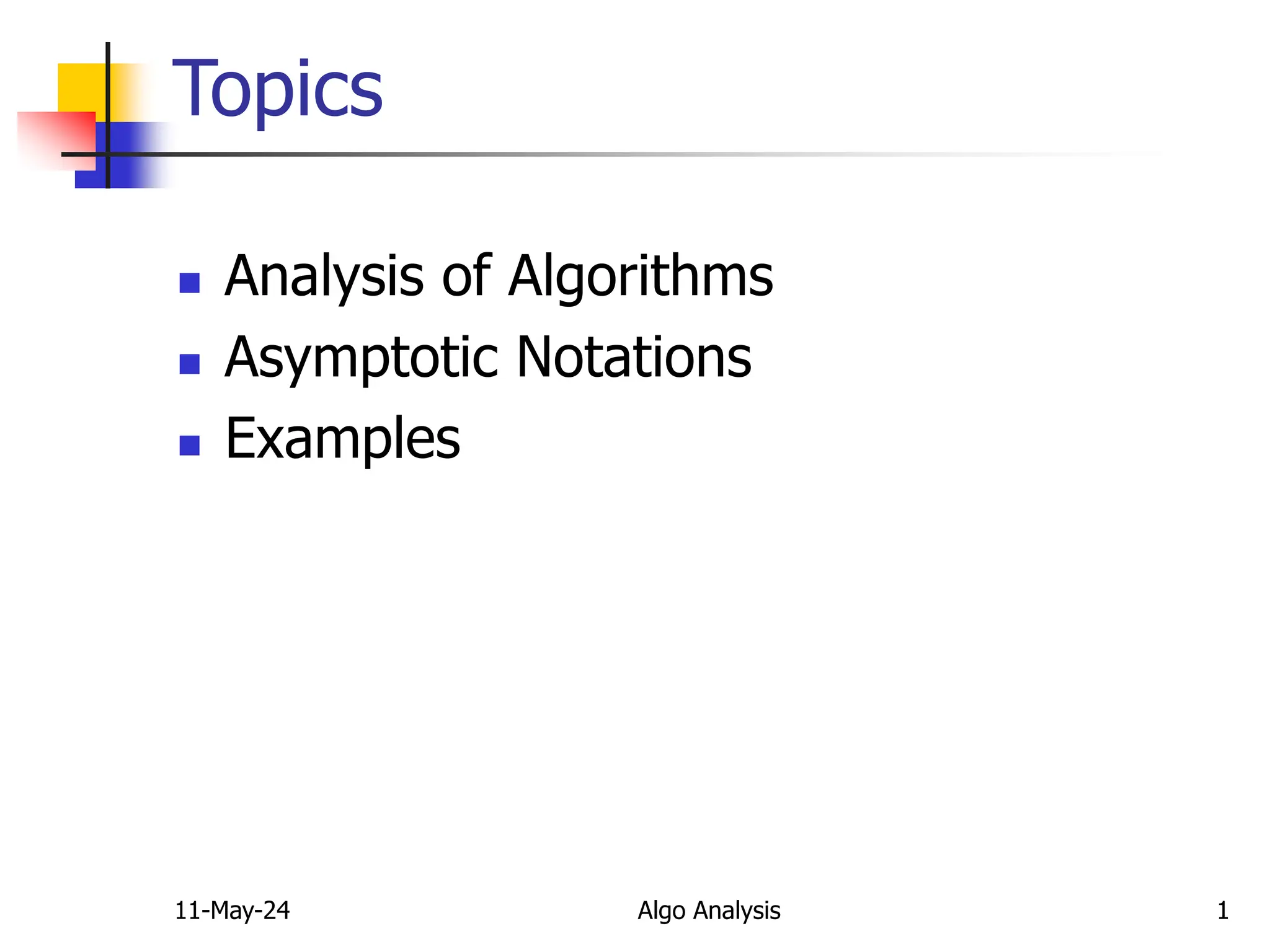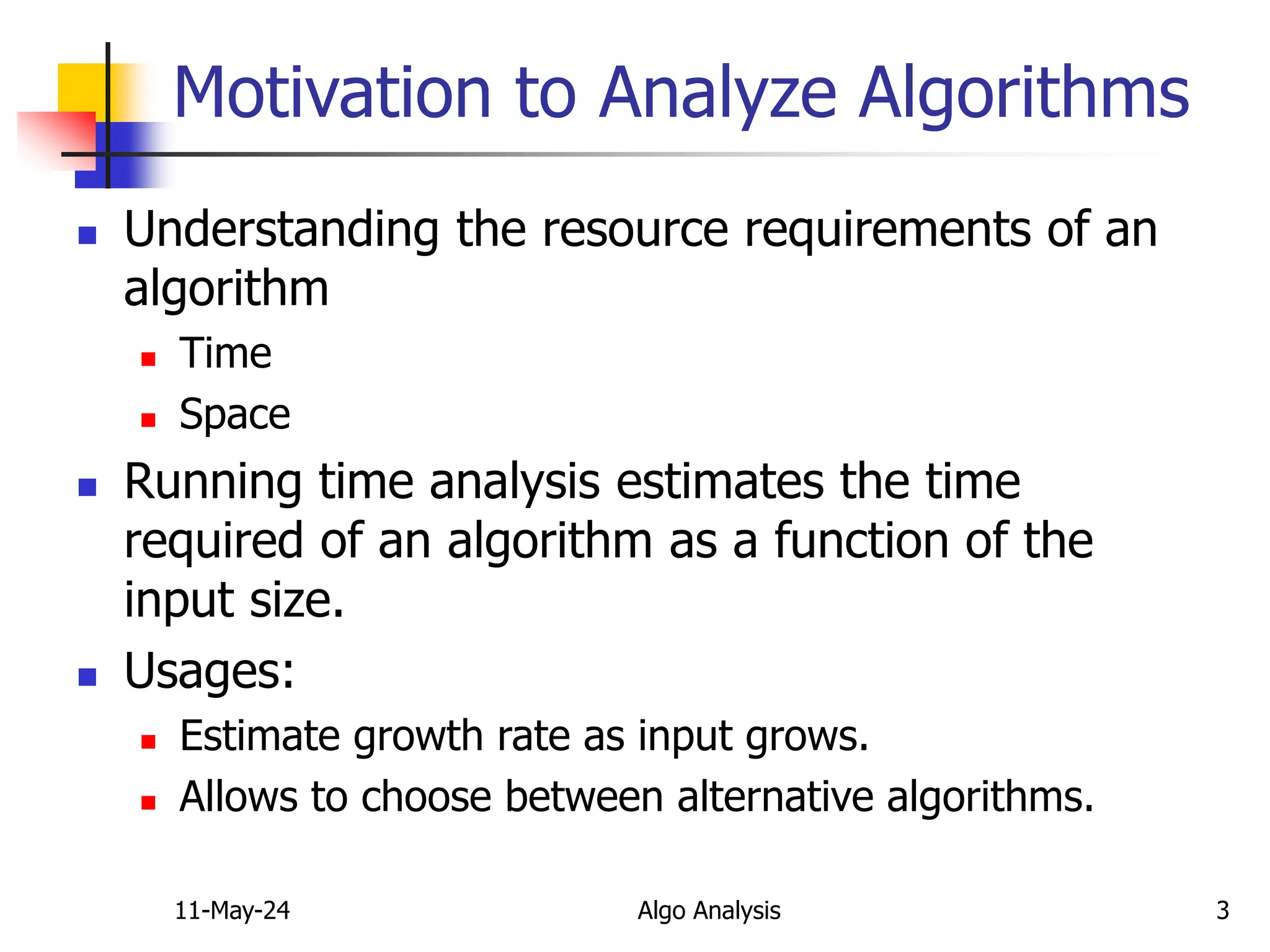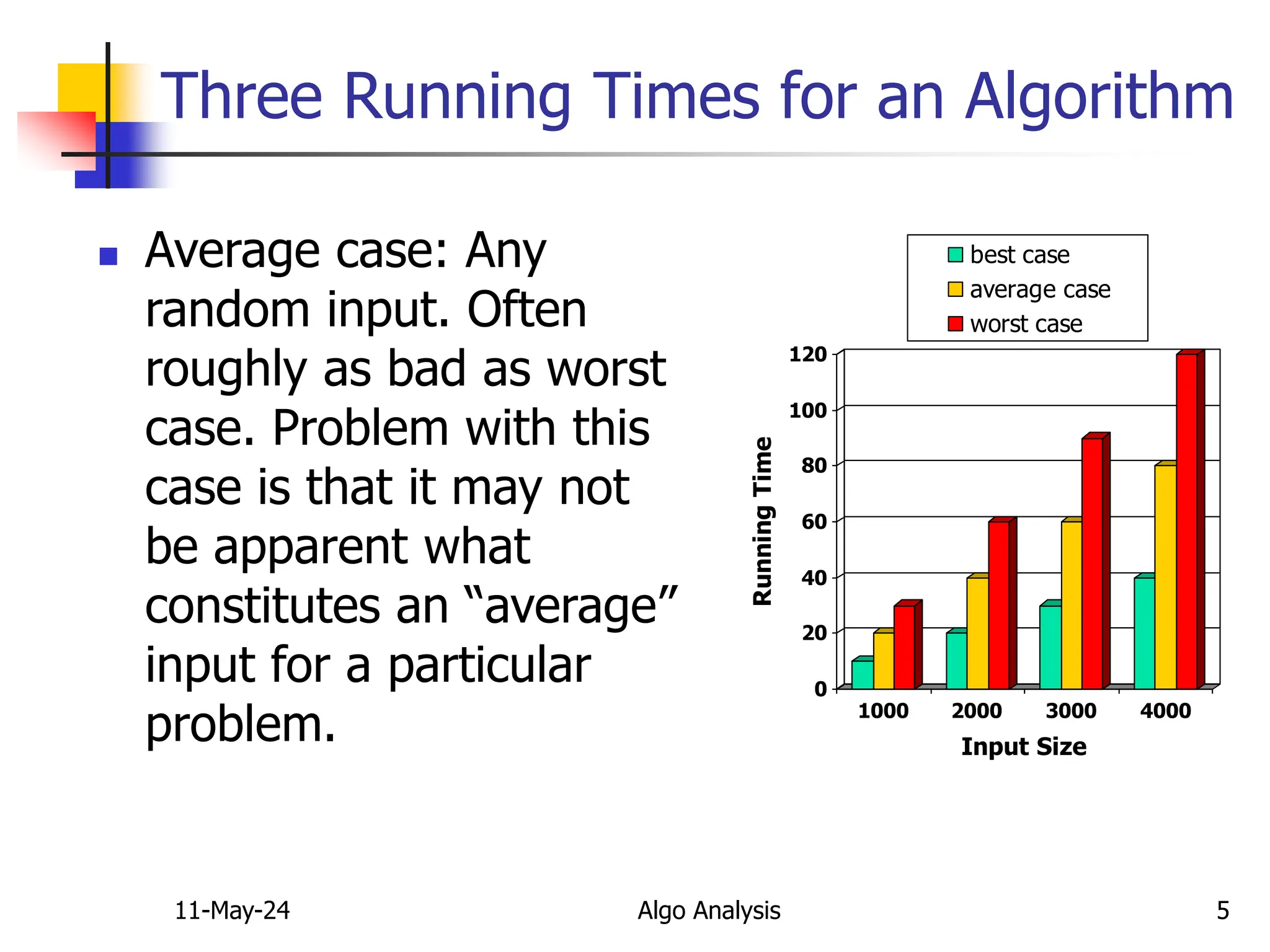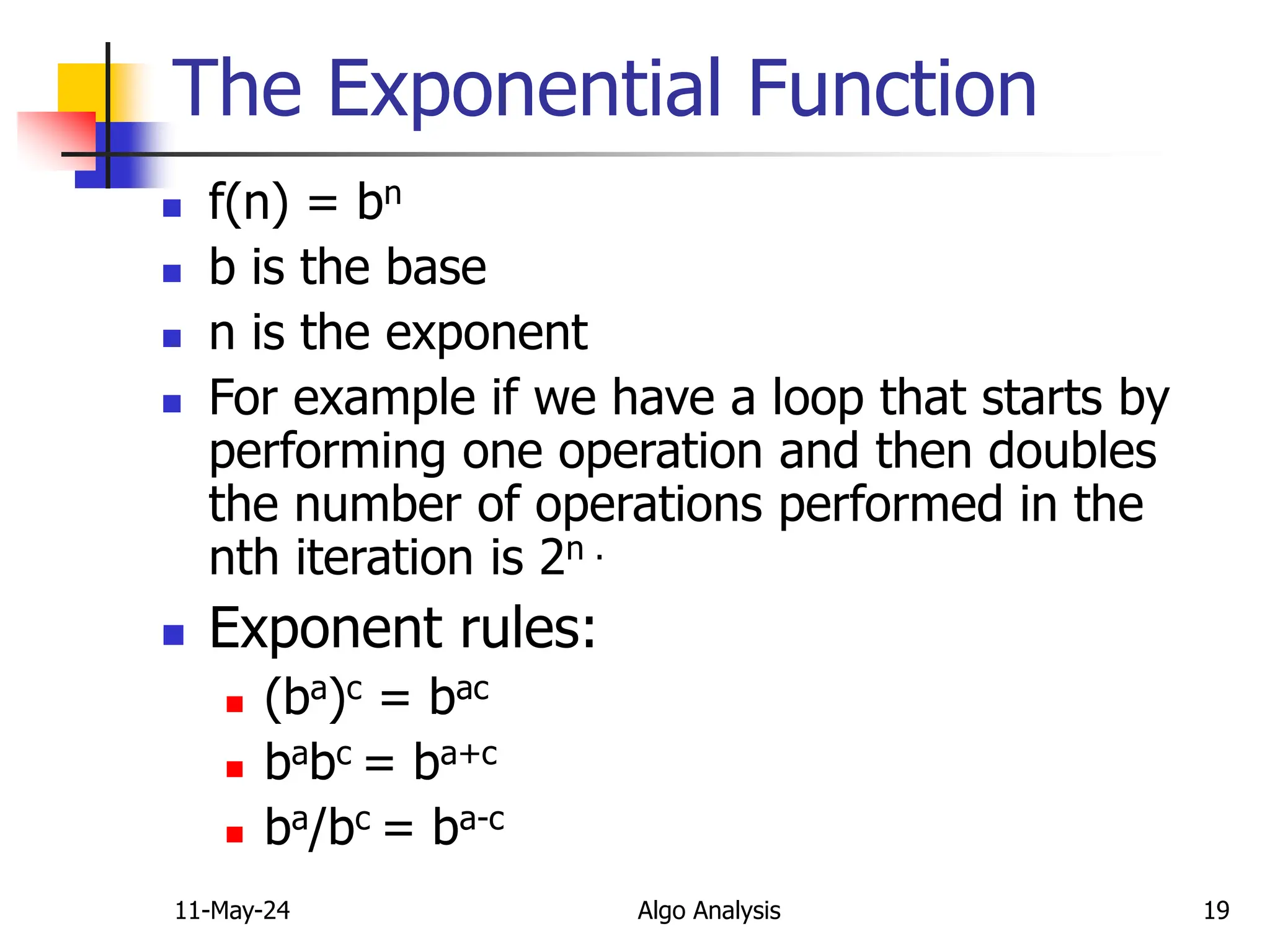The document discusses the analysis of algorithms, focusing on their resource requirements, including time and space efficiency. It outlines different running time cases (best, worst, average), experimental methods, theoretical analysis, and asymptotic notations (big-O, big-Ω, and big-Θ) for assessing algorithm performance. Additionally, it includes examples and growth functions to illustrate the concepts of algorithm complexity.











![11-May-24 Algo Analysis 12
Example 1:
Input size: n (number of array elements)
Total number of steps: 2n + 3
Algorithm arraySum (A, n)
Input array A of n integers
Output Sum of elements of A # operations
sum 0 1
for i 0 to n 1 do n+1
sum sum + A [i] n
return sum 1
Example: Find sum of array elements](https://image.slidesharecdn.com/algoanal-240511142219-3ec4d023/75/introduction-to-algorithm-for-beginneer1-12-2048.jpg)
![11-May-24 Algo Analysis 13
Example 2
Algorithm arrayMax(A, n)
Input array A of n integers
Output maximum element of A # operations
currentMax A[0] 1
for i 1 to n 1 do n
if A [i] currentMax then n -1
currentMax A [i] n -1
return currentMax 1
Example: Find max element of an
array
Input size: n (number of array elements)
Total number of steps: 3n](https://image.slidesharecdn.com/algoanal-240511142219-3ec4d023/75/introduction-to-algorithm-for-beginneer1-13-2048.jpg)






















